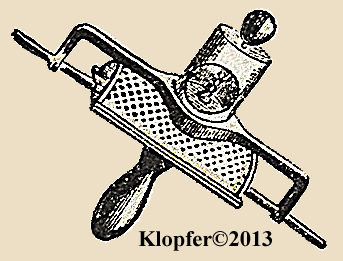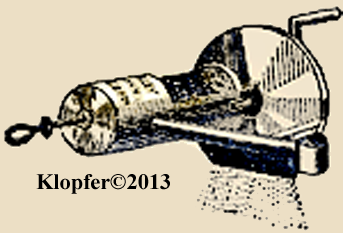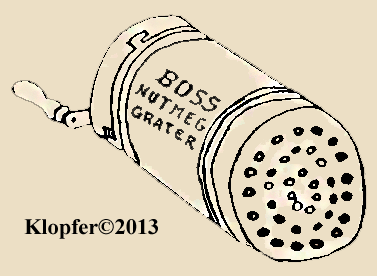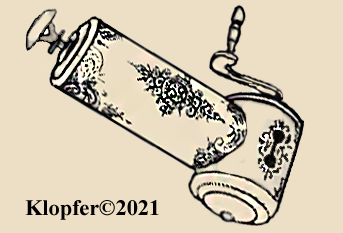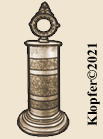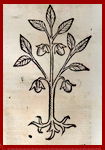
Click Me!
NutmegGraters.Com

- Home
- Featured Stories
- Picture Gallery
- Info.Wanted :
- Spurious Marks
- Trading Post
- Contact Our Site
- Wanted To Buy
Welcome ~ A Site For Nutmeg Grater Collectors
We invite viewers to join our adventure into the forgotten history of nutmeg and the nutmeg grater. NutmegGraters.Com ~ The Grater History of Nutmegs is published tri~annually in January, May and September. With each publication, new Featured Stories will be added and current WebPages expanded. We are always interested to hear from you, so let us hear your thoughts!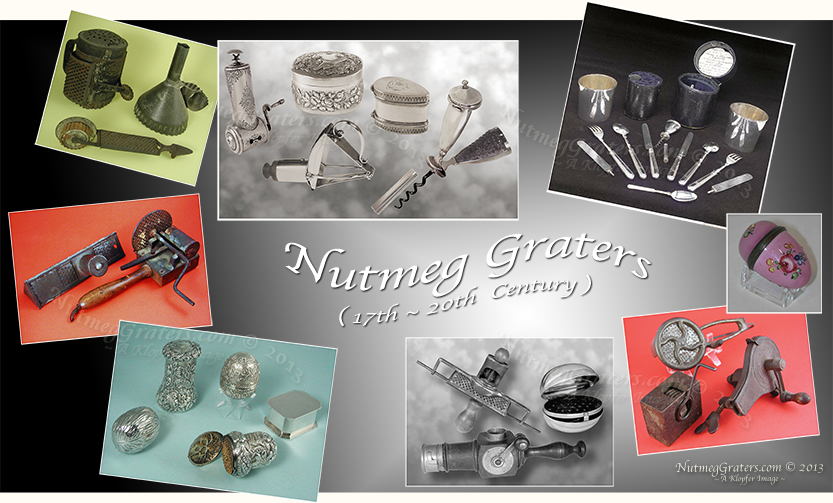

Recent in this edition:
☞ Updated Pages & New Sections:
☞ Site Map ~ (updated)
☞ Feature Stories:
☞ A Patented Nutmeg Grater Never Reaching Production ~
By John Wiley Hart, Inventor & William Kaemmerling, Assignor ~ (new)
☞ Botanical Nutmeg Image:
☞ (1864) Muscadier. Myristica officinalis, L." ~ Flore Le Regne Vegeta ~ (new)
☞ Newly Updated Items:
☞ Site Map (new revisons)
☞ Picture Gallery:
☞ Hard To Find Graters ~ 4 New Images.
A Brief History Of Nutmeg &
The History Of The Nutmeg Grater:
Before the time of Christ, the exotic spice nutmeg (Myristica Fragrans), with its mildly hallucinogenic quality, was attributed to possess mystical healing powers. It was burned as a powerful incense by early Venetians. The Header shows a nutmeg tree as depicted by Montagnana in 1497 (top left: Click me! for full details). While carefully guarding the location of its origin in the Orient, the ancient Arabian spice caravans carried nutmeg to Eastern Europeans.
Lured by the quest for riches, in 1511, the Portuguese were the first Europeans arriving directly at the Banda Islands over the high seas. For a century, Portugal enjoyed the exclusive trade in nutmeg to Western Europe until expelled by Dutch forces. Using coercion, Dutch traders of the seventeenth century created a monopoly with cloves, nutmeg, and mace from the Moluccan Islands and marketed their precious spices at monstrous profits to an eager public in Europe, the Orient and North America. A cut-throat competition for both the lucrative spice trade, and for possession of the spice plant itself, led to terrifying acts of piracy, murder and maritime smuggling. First the French, and then the English, successfully transplanted sapling nutmeg trees, initiating nutmeg plantations throughout the Indian Ocean and Caribbean. By the beginning of the nineteenth century, the Dutch spice monopoly faltered.

Nutmeg became an essential seventeenth century ingredient consumed medicinally and as a culinary delight. First introduced in England during the seventeenth century, nutmeg graters were fabricated in ever increasingly, imaginative shapes and styles. Delicate silver graters were carried in the pockets of the gentry, who also toted luxurious silver "traveling sets" of tableware, that on occasion contained a nutmeg grater. By the late eighteenth century, we find fashionable creations in Battersea enamel, ivory, silver form brass, and exotic wooden inlay. Less costly, primitive nutmeg graters were made from wood, tin and iron. The social custom of carrying a nutmeg grater in the pocket spread throughout all culture-seeking societies, to include the American Colonies, and nutmeg was used when flavoring 17th and 18th century alcoholic beverages such as punches, toddies, ales, wines, syllabubs and flips.
By the mid-nineteenth century, the price for nutmeg became moderately priced. The study of mid-Victorian and American Civil war cookbooks shows that one out of five recipes contained nutmeg as a flavoring. Use of the spice was prevalent in everything from pumpkin pie and rice pudding to venison broth and ketchup. Even a concoction to treat baldness with nutmeg is known. From the 1850s to the 1920s an astonishing array of technologically improved nutmeg graters were patented from across America. Each product attested to be superior to the last, all designed to complete a simple chore without abrading the user's fingers. While a handful of mechanical nutmeg graters were success stories, most were short lived failures.
Americans today often minimize nutmeg as a minor seasoning to sprinkle atop our Christmas eggnog. Yet, many claimed that nothing compares to the spice freshly grated, and that the best nutmeg still comes from the Banda Islands.
[KLOPFER article © 1981 (Adapted Text) ]